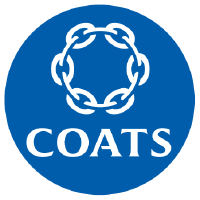Alok Industries Ltd
NSE:ALOKINDS
Profitability Summary
Alok Industries Ltd's profitability score is 31/100. We take all the information about a company's profitability (such as its margins, capital efficiency, free cash flow generating ability, and more) and consolidate it into one single number - the profitability score. The higher the profitability score, the more profitable the company is.
Score
We take all the information about a company's profitability (such as its margins, capital efficiency, free cash flow generating ability, and more) and consolidate it into one single number - the profitability score. The higher the profitability score, the more profitable the company is.
We take all the information about a company's profitability (such as its margins, capital efficiency, free cash flow generating ability, and more) and consolidate it into one single number - the profitability score. The higher the profitability score, the more profitable the company is.
Score
Score
Margins
Profit margins represent what percentage of sales has turned into profits. Simply put, the percentage figure indicates how many cents of profit the company has generated for each dollar of sale.
Profit margins help investors assess if a company's management is generating enough profit from its sales and whether operating costs and overhead costs are being contained.
Earnings Waterfall
Alok Industries Ltd
|
Revenue
|
37.1B
INR
|
|
Cost of Revenue
|
-26.9B
INR
|
|
Gross Profit
|
10.2B
INR
|
|
Operating Expenses
|
-14B
INR
|
|
Operating Income
|
-3.9B
INR
|
|
Other Expenses
|
-4.3B
INR
|
|
Net Income
|
-8.2B
INR
|
Margins Comparison
Alok Industries Ltd Competitors
| Country | Company | Market Cap |
Gross Margin |
Operating Margin |
Net Margin |
||
|---|---|---|---|---|---|---|---|
| IN |
A
|
Alok Industries Ltd
NSE:ALOKINDS
|
86.1B INR |
27%
|
-10%
|
-22%
|
|
| CN |
S
|
Shijiazhuang ChangShan BeiMing Technology Co Ltd
SZSE:000158
|
32.6B CNY |
10%
|
0%
|
-3%
|
|
| IN |
S
|
Spentex Industries Ltd
NSE:SPENTEX
|
291.1B INR |
18%
|
-757%
|
-685%
|
|
| TW |

|
Eclat Textile Co Ltd
TWSE:1476
|
107B TWD |
31%
|
21%
|
18%
|
|
| HK |
C
|
Cecep Costin New Materials Group Ltd
HKEX:2228
|
19.9B HKD |
0%
|
-269%
|
-569%
|
|
| TW |

|
Ruentex Industries Ltd
TWSE:2915
|
57.9B TWD |
38%
|
7%
|
469%
|
|
| IN |
W
|
Welspun India Ltd
NSE:WELSPUNIND
|
146.2B INR |
47%
|
8%
|
6%
|
|
| IN |
T
|
Trident Ltd
NSE:TRIDENT
|
142.1B INR |
48%
|
7%
|
4%
|
|
| UK |

|
Coats Group PLC
LSE:COA
|
1.2B GBP |
37%
|
16%
|
5%
|
|
| IN |

|
Vardhman Textiles Ltd
NSE:VTL
|
132.2B INR |
45%
|
9%
|
9%
|
|
| IN |

|
Swan Energy Ltd
NSE:SWANENERGY
|
130.1B INR |
16%
|
-3%
|
15%
|
Return on Capital
Return on capital ratios give a sense of how well a company is using its capital (equity, assets, capital employed, etc.) to generate profits (operating income, net income, etc.). In simple words, these ratios show how much income is generated for each dollar of capital invested.
Return on Capital Comparison
Alok Industries Ltd Competitors
| Country | Company | Market Cap | ROE | ROA | ROCE | ROIC | ||
|---|---|---|---|---|---|---|---|---|
| IN |
A
|
Alok Industries Ltd
NSE:ALOKINDS
|
86.1B INR |
4%
|
-12%
|
-8%
|
-6%
|
|
| CN |
S
|
Shijiazhuang ChangShan BeiMing Technology Co Ltd
SZSE:000158
|
32.6B CNY |
-4%
|
-2%
|
0%
|
0%
|
|
| IN |
S
|
Spentex Industries Ltd
NSE:SPENTEX
|
291.1B INR |
26%
|
-53%
|
40%
|
-124%
|
|
| TW |

|
Eclat Textile Co Ltd
TWSE:1476
|
107B TWD |
24%
|
20%
|
28%
|
26%
|
|
| HK |
C
|
Cecep Costin New Materials Group Ltd
HKEX:2228
|
19.9B HKD |
-38%
|
-35%
|
-18%
|
-58%
|
|
| TW |

|
Ruentex Industries Ltd
TWSE:2915
|
57.9B TWD |
14%
|
12%
|
0%
|
0%
|
|
| IN |
W
|
Welspun India Ltd
NSE:WELSPUNIND
|
146.2B INR |
13%
|
6%
|
12%
|
8%
|
|
| IN |
T
|
Trident Ltd
NSE:TRIDENT
|
142.1B INR |
7%
|
4%
|
9%
|
6%
|
|
| UK |

|
Coats Group PLC
LSE:COA
|
1.2B GBP |
18%
|
5%
|
20%
|
12%
|
|
| IN |

|
Vardhman Textiles Ltd
NSE:VTL
|
132.2B INR |
9%
|
7%
|
9%
|
7%
|
|
| IN |

|
Swan Energy Ltd
NSE:SWANENERGY
|
130.1B INR |
18%
|
7%
|
-2%
|
-1%
|
Free Cash Flow
Free cash flow (FCF) is the money a company has left over after paying its operating expenses and capital expenditures. The more free cash flow a company has, the more it can allocate to dividends, paying down debt, and growth opportunities.
If a company has a decreasing free cash flow, that is not necessarily bad if the company is investing in its growth.















































 You don't have any saved screeners yet
You don't have any saved screeners yet
